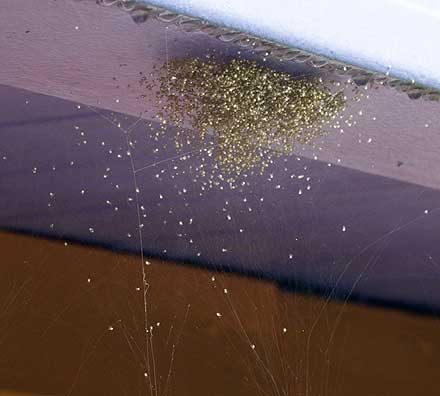This spider, whose name refers to the golden color of its strong silk, not the color of the spider itself, is common and widespread in Eastern Australia. It is one of Australia's most noticed and photographed spiders because of its large size and its habit of staying in its web during the daytime. The orb of the web is around 1m in diameter, but the golden struts or stay lines may reach up to 6m across. Sometimes these spiders aggregate in loose 'colonies'. This spider is extremely common in gardens, parks, around houses and in suburban and urban bushlands, mostly in coastal regions, while the similar Trichonephila edulis is more common inland, though their ranges overlap. The common name may refer to any of the species with golden silk. The large females stays upside more or less at the centre of the orb web, often nearby a messy looking chain of partly consumed food parcels. Much smaller males are often found on the outskirts of the web, as many as 6 or more, waiting for the opportunity to mate. The female has been known to kill and eat the male after mating. This species can be identified by its yellow, conical, protruding sternum, the chest part around which the legs are attached. It also has yellow leg joints. Its name refers to hairy plumes on the leg, but this is confusing as Trichonephila edulis has plumes which may be even more obvious. Food, caught in the permanent web, is usually insects, sometimes very large insects like grasshoppers and dragonflies, beetles, moths, butterflies and large flies. If the web is damaged it is usually repaired within an hour or so, except when pregnant females are about to lay eggs. This spider is very shy, usually running to the higher struts of the web when disturbed, sometimes into nearby foliage. It may sometimes vibrate the web to confuse predators. Despite its large size it is not known to bite people, though some defensive bites of trapped females are theoretically possible. ♀ 19mm ♂ 5mm
- Female underneath
- Female from side
- Female near adult
- Female with prey
- Female side on
- Young female
- Juvenile
- Juvenile female
- Young Male
- Young Male
- Young Male
- Male from above
- Male palps from side
- Male underneath
- Male palps closeup
- Male from above
- Another male from above
- Another male from side
- Young spiderlings hatching
Female underneath

Female from side
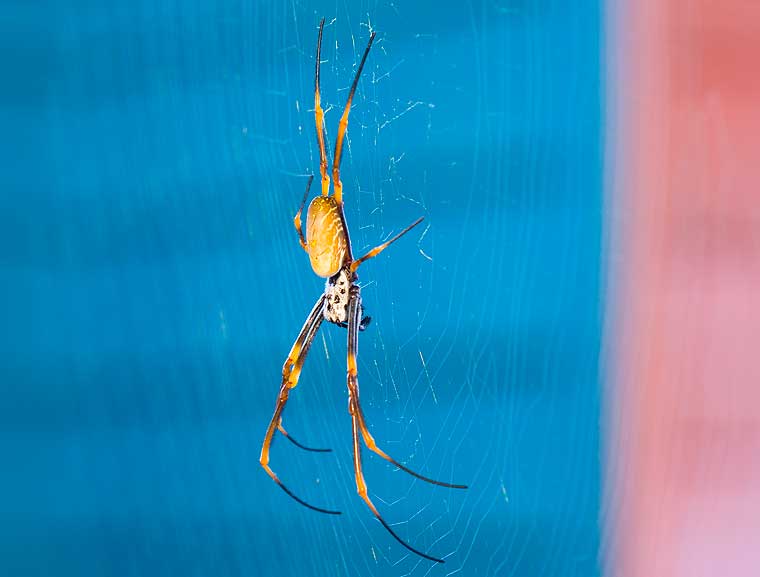
Female near adult
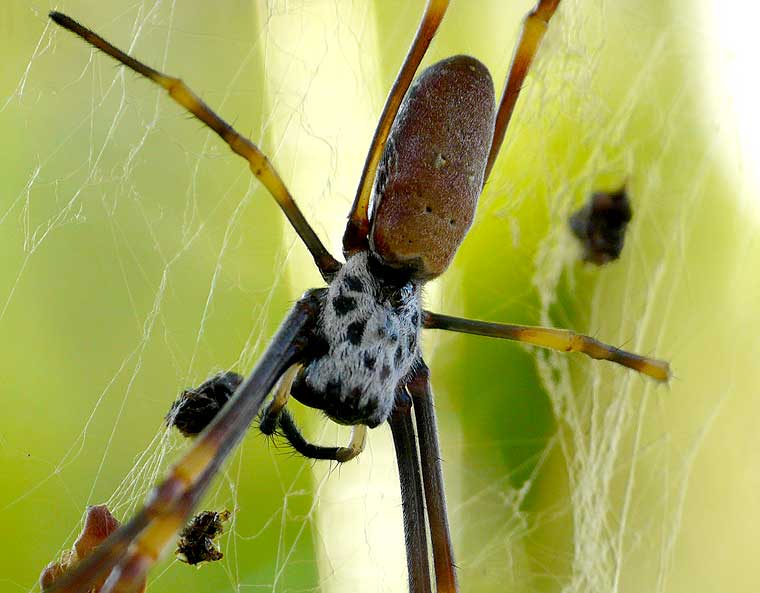
Female with prey

Female side on
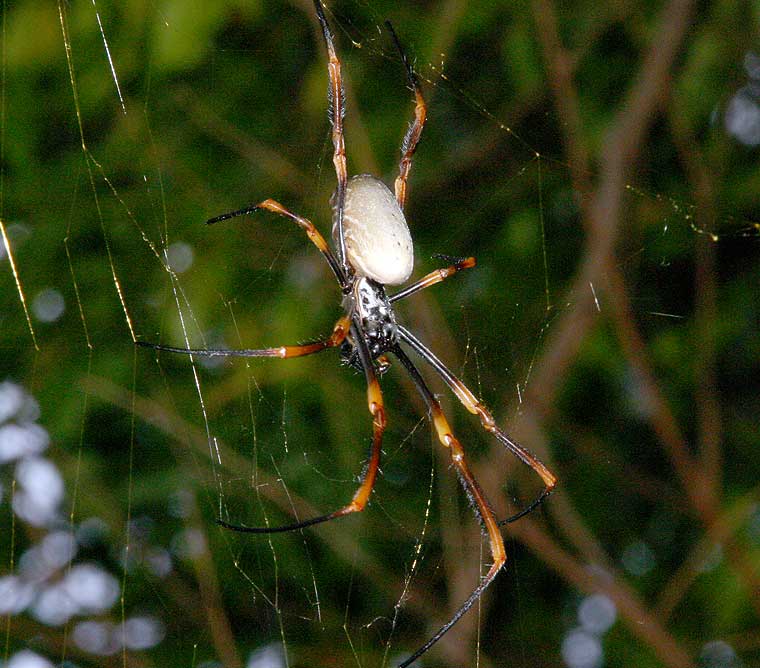
Young female
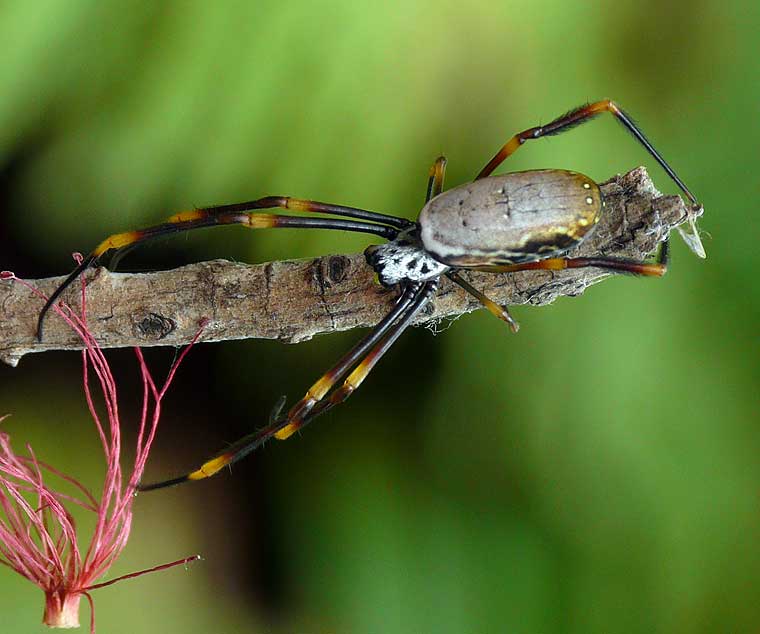
Juvenile
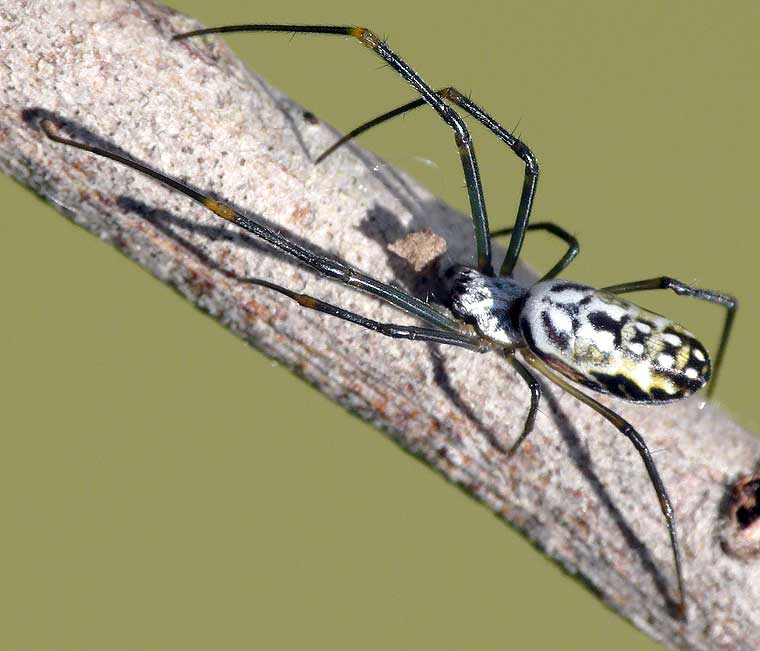
Juvenile female
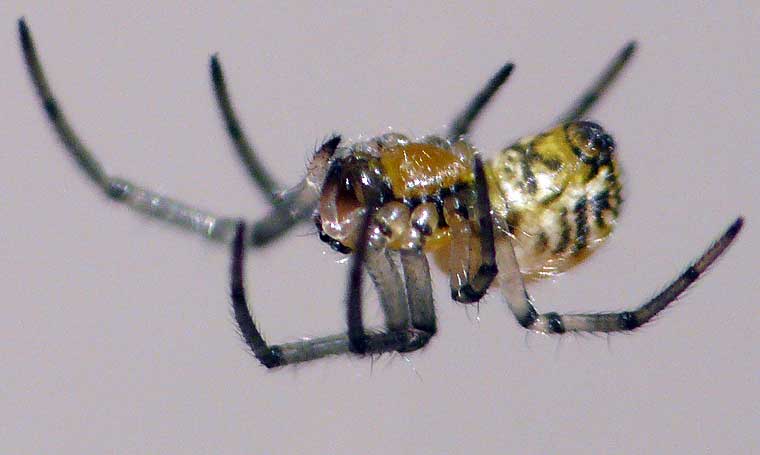
Young Male

Young Male

Young Male
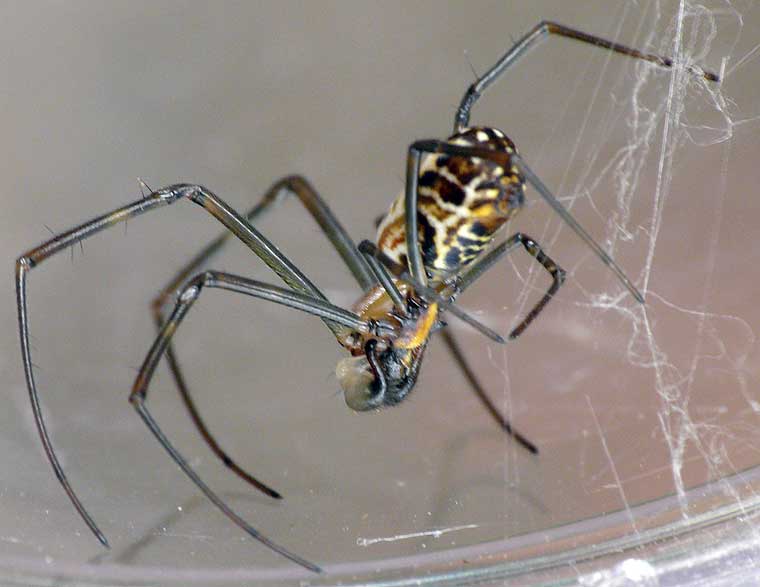
Male from above
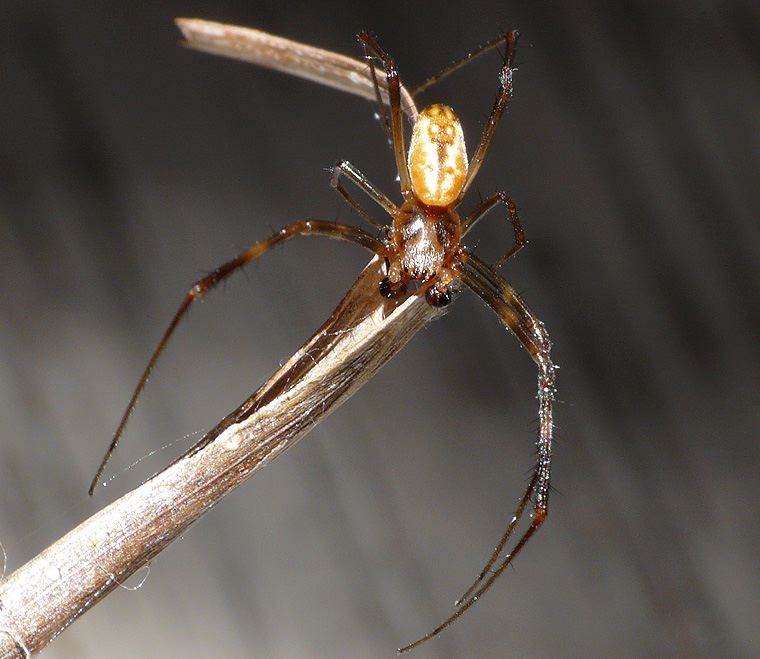
Male palps from side

Male underneath
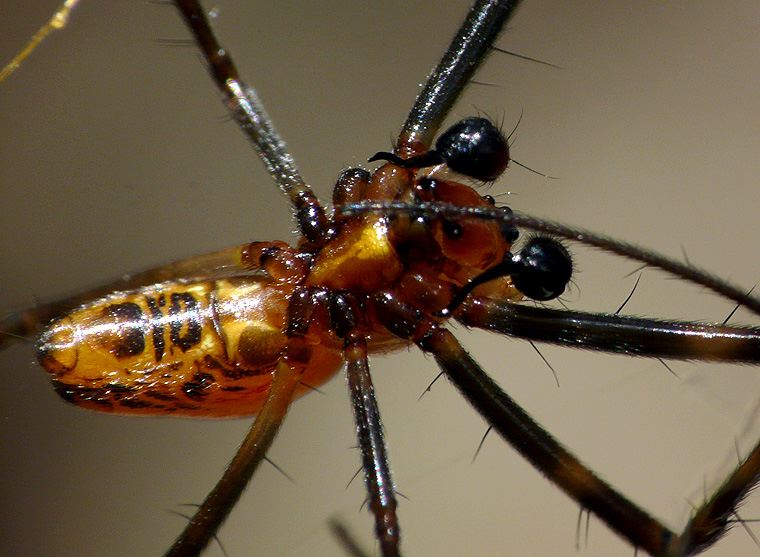
Male palps closeup

Male from above

Another male from above
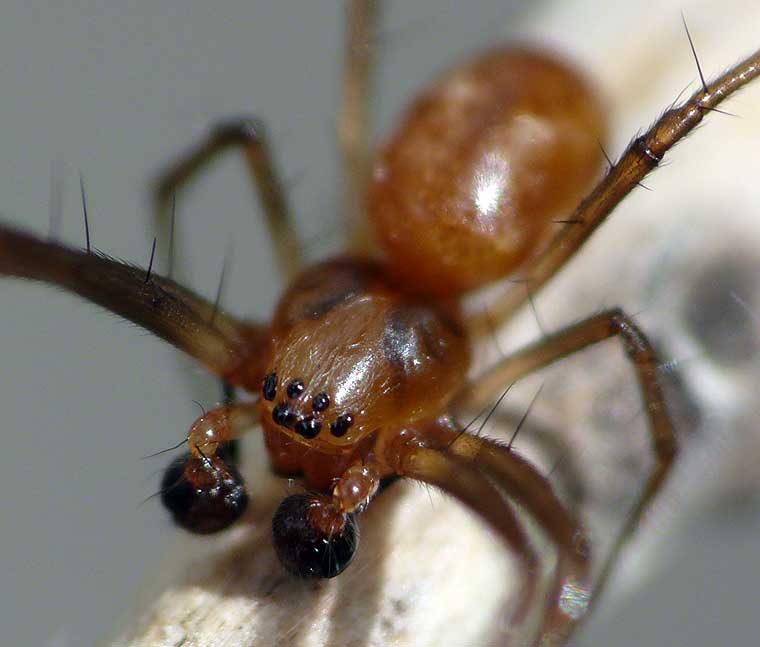
Another male from side

Young spiderlings hatching
